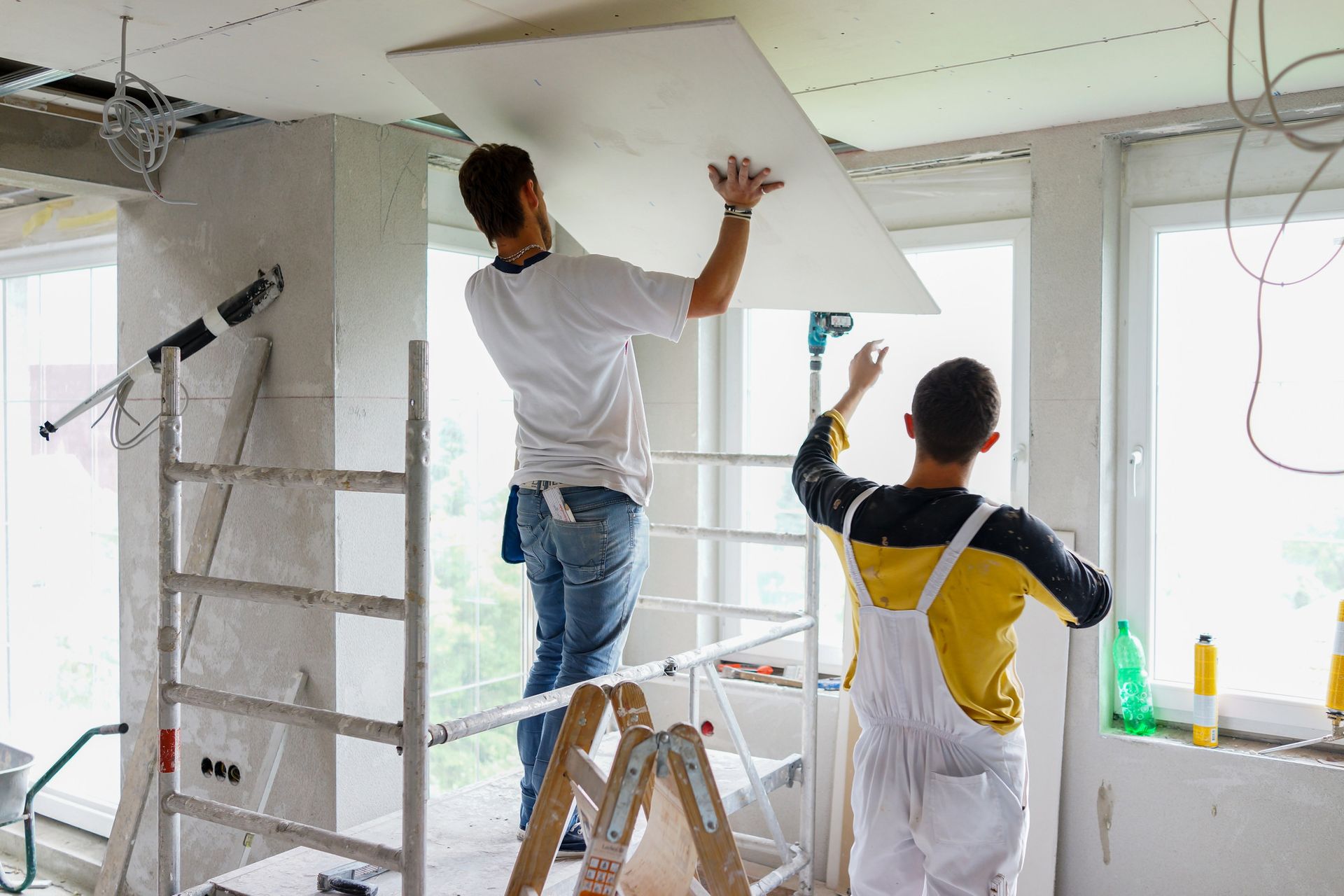Two Thirds of Brits Attempt DIY �������� Improvements Resulting in 79% of ‘Botched Jobs

A survey from Yell has found that 68% of Brits have attempted DIY home improvements over the past year, with 64% doing so to save money. Experts warn that while DIY may seem like the easier option, it should be approached with caution as 79% of those surveyed revealed they spent money hiring a professional to fix botched DIY jobs.
From re-wiring a kitchen to fitting light fixtures and plumbing, has revealed the most commonly attempted DIY home improvements and the cost of DIY mishaps.
The Most Popular DIY �������� Improvements
As over 3.3 billion turn to TikTok to view the hashtag #homeDIY, it seems like many homeowners think they are a dab hand at the odd DIY job. According to those surveyed, while YouTube was their first point of call (41%), 1 in 10 believe they don’t need any help when it comes to DIY - which may explain the need for professional fixes. 1 in 3 surveyed said they would turn to their partner or husband first before calling a professional, whereas only 28% said they would reach out to a professional before attempting a DIY project themselves.
25-34-year-olds are most likely to refer to social media platforms such as YouTube before a professional when seeking advice or tutorials (57%). In contrast, with age comes experience as the older generations aged 55+ are most likely to contact a professional tradesperson first (37%).
Most Commonly Attempted DIY Projects
Understandably, low-risk DIYs are the most popular tasks that homeowners are attempting. The most popular DIY project was Painting (64%), followed by hanging pictures/shelves (47%) and bleeding radiators (36%). However, low-risk DIYs do not mean things can’t go wrong. While 63% admit that they attempt DIY to save money, botched DIY jobs could see you spending far more than originally planned. Drilling holes in your wall to hang a shelf can still result in a pricey mishap. Accidentally drilling through a water pipe in your wall could result in flooding or leaks and set you back anything between £150-£300 to have it repaired by a professional.
42% of those surveyed attempt DIY home improvements because they think it looks easy to do, despite the risks and having no previous professional experience. Only 10% wouldn’t attempt DIY themselves over getting a professional.
| Rank | DIY Project | % attempted |
|---|---|---|
| 1 | Painting | 64% |
| 2 | Hanging pictures/shelves | 47% |
| 3 | Bleed radiator | 36% |
| 4 | Unblock a drain/pipe | 29% |
| 5 | Wallpapering | 29% |
| 6 | Changing a light fixture | 27% |
| 7 | Fixing a fence | 25% |
| 8 | Leak repair | 15% |
| 9 | Installation of washing machine | 14% |
| 10 | Sockets or switch installation | 13% |
Top 10 Riskiest DIY Jobs Brits Are Attempting
Possible botched jobs, expensive fixes, and mishaps are not putting homeowners off attempting even the riskier DIY projects. In fact, DIY-related accidents spike annually over Easter, when many homeowners use the long weekend to get ahead on some home improvements.
From water damage and valve failure to flooding and even injury to the DIYer themselves, there are many risks involved when taking on a DIY plumbing job. Despite this, 1 in 12 individuals still said they have attempted to install a new bathroom in their home. Professional repairs for any mishaps caused by a dodgy plumbing installation could set you back an extra £100-£5000, with issues ranging from incorrect plumbing placements to not following legal regulations. Other high-risk DIY home improvements homeowners have admitted to attempting are fixing roof damage (6%) and rewiring (5%).
| Rank | DIY Project | % attempted |
|---|---|---|
| 1 | Build a partition wall | 4% |
| 2 | Install a new radiator | 4% |
| 3 | Rewiring | 5% |
| 4 | Install a toilet | 6% |
| 5 | Fixing roof damage | 6% |
| 6 | Kitchen installation | 6% |
| 7 | Laying turf | 7% |
| 8 | Bathroom installation | 7% |
| 9 | Patio laying | 7% |
| 10 | Replace fire alarms | 10% |
The Cost of DIY
While DIY may be initially to save money, a correction can be costly. 33% of those surveyed said they had spent anything between £500-£5000 on getting DIY help from professionals to fix their DIY mishaps. One even said they spent £30,000 on a DIY project, to only have to spend a further £50,000 on fixing their DIY mistakes through a professional.
The data revealed that homeowners on average spend £639.18 on doing their DIY projects for home improvements whilst the average spend on hiring a professional to fix any mistakes or mishaps is £935.
| Money spent on fixing DIY mishaps | People spending |
|---|---|
| £100 or less | 2% |
| £101 - £200 | 17% |
| £201 - £500 | 17% |
| £501 - £1000 | 16% |
| £1001 - £2000 | 11% |
| £2001 - £4000 | 4% |
| £4001 - £5000 | 3% |
| More than £5000 | 0.11% |
| I don’t spend any money on fixing DIY with professional help | 21% |
Regional Differences
Whilst reasons for DIY-ing may vary, the survey identified that the UK region that attempts DIY the most is the East Midlands with 72% attempting home DIYs in the past year.
The survey found that Greater London is the region that has DIY mishaps fixed by professionals the most (86%) and also spends the highest amount in doing so with an average spend of £1364. Whilst plumbing DIY jobs might be one of the riskiest, Greater London is also the region where most attempt this out of the rest of the UK (12%) alongside Wales (12%) and East Midlands (8%).
The data also revealed that 1 in 10 in the West Midlands are still attempting to fix their roofs themselves - the highest percentage in any UK region.
Leave It to the Professionals
Whilst saving money short term may seem like a good idea, this could leave you with botched home improvements that could result in pricey fixes. To quote , who knows a thing or two about risk: ‘Risk comes from not knowing what you are doing.’
Using Yell to book a local , or handyman not only makes it more efficient but means you can avoid any long waiting lists due to 2024's surge in demand. You can rest assured that our tradespeople respond quickly, give you a dedicated time slot for their arrival and are available across the country, no matter where you are. From home maintenance to driving lessons, with Yell you can also that allows you to connect with local experts fast to get any task on your to-do list complete.
About Yell
Yell Ltd exists to connect businesses and consumers via its leading marketplace for local services and offering managed digital marketing helping businesses to find, connect and sell to consumers online. Yell Ltd is a proud Google Premier Partner, Microsoft Advertising Elite Channel Partner, and Meta Business Partner.
Learn more at and our Media Centre
Visit our social media channels: , , ,
Download the free Yell consumer app from the or
Download the free Yell for Business app from the or
For media enquiries, please email:



Follow us on
© Yell Holdco Limited 2024. Registered office: 3 Forbury Place, Forbury Road, Reading, RG1 3YL. Registered in England & Wales No: 12315720. VAT No: GB 765 346 017. All rights reserved. ‘��������’, ‘Yell’ are trademarks of Yell Limited or its licensors. Other trademarks, service marks, logos, and domain names are the property of their respective owners.